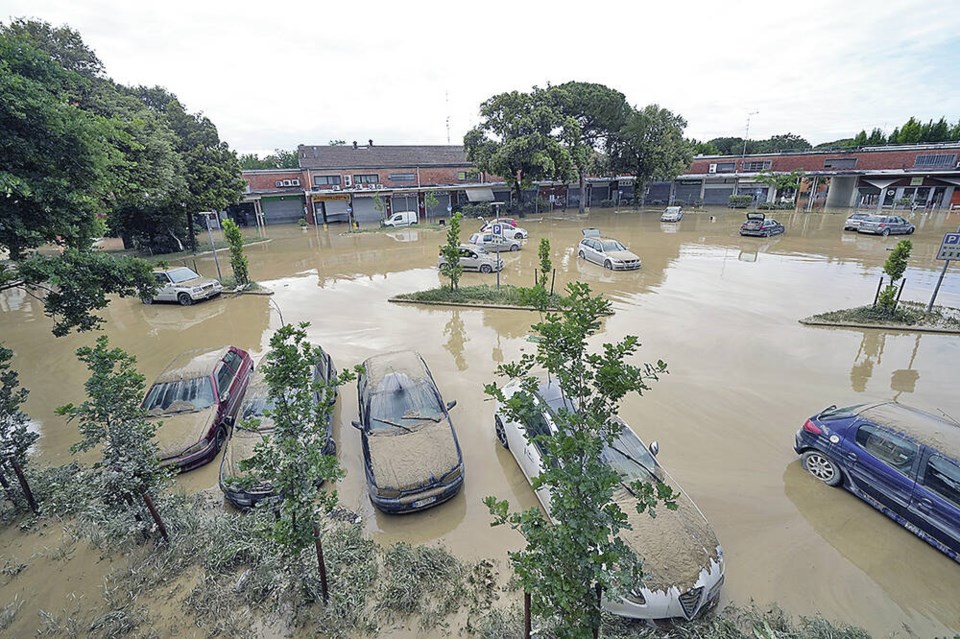A commentary by the executive director of the sa国际传媒 Museums Association.
In July, the South Korean government confirmed that 47 national treasures, one cultural heritage site, seven natural monuments, and 20 historic sites were damaged by flooding and landslides caused by an unprecedented monsoon season.
This past May, flooding damaged so many museums and heritage sites in Italy that their government instituted a ticket surcharge at all state-owned museums to help pay for the repairs.
In the week since I started working on this article, a fire in Maui razed a heritage town, destroying a museum, a gallery, several heritage buildings, and killing dozens of people.
Closer to home, the memories of wildfires that destroyed the village of Lytton and two museums are still fresh in our minds as British Columbia is in the middle of yet another summer of unprecedented fires.
Climate change is an existential threat to museums, galleries, heritage sites, intangible Indigenous cultural heritage, and the entire arts sector.
The Canadian Museums Association identifies two core responsibilities for museums in their ethical guidelines: Stewardship and public service. Museums, galleries, and archives have a legal obligation to care for cultural materials — safeguarding irreplaceable items, documents, and intangible cultural materials so they can be learned from, appreciated, and used by future generations.
Floods, fires, storms, and extreme weather make caring for these items increasingly more expensive and exponentially more difficult.
At the same time, even if arts, culture, and heritage organizations are not under imminent threat, climate emergencies are having severe economic consequences in rural communities around the province.
Smoke during the summer lowers tourism rates and the ever-present danger of fire makes planning outdoor festivals and special events nearly impossible. Mere days ago the music festival “Under the Stars” in Princeton was cancelled and attendees evacuated due to a wildfire.
Preparing and responding to emergencies costs money and requires investing in safer infrastructure, training staff and volunteers, and purchasing equipment and supplies. Yet, if arts, culture, and heritage organizations have their summer seasons ruined by severe weather events or natural disasters, they are less able to afford preparing for future emergencies.
With winters becoming more extreme and events like the 2021 atmospheric river making the fall more unpredictable, the window to safely plan events — or recover from a disaster — is becoming more and more narrow.
The federal government’s National Adaptation Strategy notes that climate emergencies disproportionately impact Indigenous communities.
Indigenous Peoples are roughly five per cent of the Canadian population, but make up 42 per cent of wildfire evacuations. The Lytton wildfire destroyed cultural objects of the Nlakapamux Nation that are irreplaceable. Even the chemicals dropped from aerial firefighters as fire suppressants can damage cultural heritage sites like petroglyphs.
Intangible objects and landscapes that have been cared for and protected for hundreds, in some cases thousands, of years can be destroyed in the blink of an eye and due to climate change, this risk increases every year.
sa国际传媒 needs to create an arts, culture, and heritage emergency response plan, today, so our communities are ready to act when the next emergency inevitably arrives. After severe flooding in 2013, Alberta created an emergency preparedness plan for its museum sector. It’s time sa国际传媒 prepares for our uncertain future.
While the loss of objects pales in comparison to the human suffering and loss of life caused by climate disasters, arts, culture, and heritage make our society stronger, more vibrant and are integral to learning from the past in order to build a better future.
If we do not plan for future emergencies, we will witness the destruction of our shared arts, culture, and heritage over and over again. In order to safeguard the irreplaceable, we must act now.
>>> To comment on this article, write a letter to the editor: [email protected]



